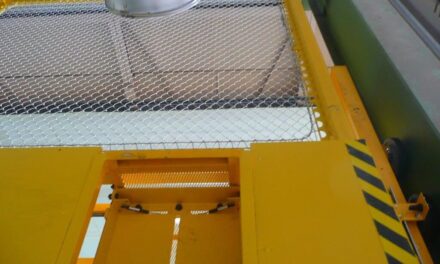Since the first lockdown, the Health and Safety Executive and other industry experts have been warning of the potential for unmanaged water systems to deteriorate or become colonised with bacteria. Spencer Culley, director at Churchill Environmental Services, discusses why water systems are at risk, the impact of water system stagnation and how to approach safe water management.
In September, three confirmed and six suspected cases of Legionnaires’ disease were reported in the Midlands. The outbreak led to six hospitalisations and may well be a consequence of the ongoing pandemic and its impact on the built environment.
Symptoms of Legionnaire’s disease include high temperature, fever, chills, muscle pain, headaches, mental confusion, and potentially pneumonia. Other symptoms – dry cough, muscle aches, and breathing difficulties – are similar to those of Covid-19.
It’s vital at the best of times to prevent Legionella growth. Considering sufferers may need similar medical resources to those with Covid, water system management has taken on a whole new importance.
Legionella growth
Legionella, the bacteria responsible for Legionnaires’ disease, can be easily controlled in well-maintained water systems. Yet certain issues can put buildings at risk of an outbreak.
Legionella is naturally occurring and rarely an issue in natural settings. However, anywhere that contaminated water can form droplets that are then inhaled presents a risk.
Basic control measures are usually enough to prevent any risk of outbreak. These include keeping water temperatures above or below the temperature window in which the bacteria can survive, keeping the water within the system clear of sediment, and preventing water from stagnating in the system.
It is the latter that has been particularly difficult over the past months. Many buildings were closed virtually overnight when the first Government guidance was released in the spring.
Since then, many have remained closed or functioned at greatly reduced occupancy. The abruptness of this change to our working lives has left many still questioning how best to safely manage buildings. There are countless articles about the safe return to work and the need for safety precautions such as social distancing to be in place. But for some, this has meant hard FM such as water management and building compliance has momentarily been forgotten.
Almost all building water systems are designed and managed in accordance with standard guidance. However, this guidance is based on the premise that a system will be able to provide a continuous supply of water for the building at (or near to) maximum capacity and that the water systems will be used regularly. This is a far cry from the reality this year.
Rising numbers
Churchill Environmental Services carried out data analysis of legionella samples that clearly illustrates the issue. Water samples were taken across hot- and cold-water systems in a variety of buildings including schools, retail outlets, offices, factories, and communal areas in residential buildings.
The samples have demonstrated an alarmingly high rate of failure to meet safe levels of the bacteria. Compared to the same period in 2019, the rate of failure has increased from 13 to 22 per cent. A number of high-profile buildings have been forced to close entirely due to water sample failures, such as part of the Royal Navy HQ in Portsmouth.
The case reported in the West Bromwich area in September was the first in the current period but may not be the last unless preventative measures are put into place. Regularly flushing all taps in unused buildings is highly effective. However, many organisations are working with a skeleton team, returning staff to the office in steps, or working split-shifts to regulate building capacity.
While a building is not completely closed, the importance of such measures may be forgotten. The coming months could be particularly risky as organisations manage a return to the workplace. Those that have suffered from Covid-19 and have slightly compromised immune systems will be particularly vulnerable. Facilities managers cannot let the concern about one illness distract them from managing the risk of another. The return to the office must not be as rushed as leaving it. Instead, it needs to be a careful and measured process.
Ongoing risks
While building usage remains at limited capacity, the long-term impacts must also be accounted for. Water systems used below their expected level are at risk of biofilm development.
Biofilm is a complex micro-ecosystem formed of numerous bacteria and microorganisms. Once it comes into contact with a surface, the biofilm begins to put down ‘roots’ and develop a glue-like protective shield, extracellular polymeric substance (EPS).
EPS acts as a food and protects the microorganisms within, allowing the miniature ecosystem to grow rapidly until it bursts open or breaks away to spread the outbreak throughout the water system. This type of outbreak has been known to contaminate water systems for months or even years and is extremely difficult to remove.
This may not be a risk that disappears once the pandemic is over; there is much speculation about changing approaches to working practices. Many suggest that we will see much more of a ‘blended’ approach where staff work from home several days each week. The majority of buildings may be operating at reduced occupancy for the foreseeable future.
As a result, we will need a new approach to water system management. Safety measures need to be more resilient to fluctuating occupancy levels and be able to adapt to future building closures – planned or unexpected.
Calls for an urgent formal review of water hygiene and legionella risk assessments have come from the Health and Safety Executive, Legionella Control Association and other industry bodies. This will require specialist assessors to review each organisation’s previous arrangements and determine the impact of lockdown on the overall use of the water systems, all related assets, the susceptibility of occupants and the new potential for contamination.
This will not be a simple or quick process. As such, many specialists are now advocating for supplementary water sampling regimes as a precautionary measure to ensure controls are effective. Risk reviews and water safety plans, with comprehensive details on how to shift to new measures, will also need to be created and implemented.
The future of virtually every aspect of the built environment has been altered by the pandemic. While this has been a challenging time for many, it is vital that important elements of building management do not slip through the cracks. The pandemic has created a more wary and health-conscious population and building usage must adapt to reflect this.
The pandemic has also shown both our strengths and limitations in volatile times. We should learn lessons from this period and be prepared to create buildings and systems for the future that are more agile and resilient.





